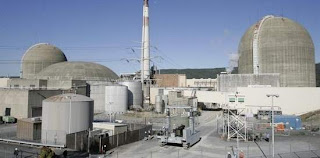 |
| Ricardo Byrd |
Testimony by Ricardo C. Byrd
Executive Director, National Association of Neighborhoods
Blue Ribbon Commission on America’s Nuclear Future
October 20, 2011
Recycling Spent Nuclear Fuel: National Association of Neighborhoods – “A Dog in This Fight”
Good Afternoon. My name is Ricardo C. Byrd. I am the Executive Director of the National Association of Neighborhoods (NAN), an organization that started in 1975. I also serve as the Co-Chairperson of the AREVA North America Community Advisory Council. I am not a nuclear policy or scientific expert; but I am an expert in the application of grass roots common sense to environmental public policy questions. America’s nuclear future is crying out for the application of more common sense.
We appreciate the opportunity to appear before you and to comment on the commission’s draft report. This draft report is a good start; however, it is not yet good enough. The report can and must be made better to respond to the need for a clear, time sensitive yet cost effective path for the disposal of the nation’s nuclear waste.
The National Association of Neighborhoods is not new to today’s topic. You might wonder why my organization is interested in spent nuclear fuel; after all, we traditionally focus on grass roots empowerment issues, housing, crime, transportation, environmental justice and jobs. Allow me a moment to explain; almost every major electric utility is accessing our members; ratepayers, customers like you and me; a fee, a tax, for the disposal of nuclear waste. Most Americans have no idea that their monthly electric bill includes a fee dedicated to the disposal of spent nuclear fuel. This stealth electric utility tax comes out of our pockets; and with today’s challenging economy, most of us are struggling to count every penny.
As early as 1996, the National Association of Neighborhoods inquired how the Nuclear Waste Fund was being spent. In 1997 and 1998, we organized, with the support of the Nuclear Energy Institute, delegations of grass roots, minority business and civil rights organizations, to visit Yucca Mountain, the nation’s planned nuclear waste repository. The National Association of Neighborhoods arranged for minority organizations to see the Indian Point Nuclear Plant in 2007; and in 2008 and 2010, my organization participated in two non-traditional stakeholders visits to France, sponsored by AREVA. In France, we were able to see how the French, with almost 80% of their electric power being generated using nuclear power, addressed their spent nuclear fuel issues.
We are here today because the National Association of Neighborhoods is concerned with how the BRC Draft Report can be made better. We offer three recommendations:
1. Reduce the Size of the Problem
According to the BRC Draft Report, “…At present, nearly all of the nation’s existing inventory of SNF [Spent Nuclear Fuel] is being stored at the reactor sites where it was generated—about three-quarters of it in shielded concrete pools and the remainder in dry casks above ground. The quantity of commercially-generated spent reactor fuel currently being stored in this manner totals close to 65,000 metric tons.” France is reducing the volume of its spent nuclear fuel by approximately 75% by reprocessing it. If the United States used reprocessing, we would have less than 17,000 tons to dispose of.
2. Turn Spent Nuclear Fuel into a Strategic Asset
Reprocessing spent nuclear fuel into new fuel will create a strategic nuclear fuel reserve. This strategy of reprocessing has worked in Europe for over 20 years. Having a nuclear fuel reserve will guarantee supplies that can keep our reactors operating.
3. Push the Restart Button Now - Through the Use of “Off the Shelf” Technology
The National Association of Neighborhoods agrees with the BRC recommendation that we need to move forward with consolidated interim storage capacity. However, we strongly disagree with BRC that there is a need to wait for “new technologies to materialize” before making a decision about reprocessing spent nuclear fuel. The French, the Chinese, the Japanese and the Russians are not waiting “for new technologies to materialize” nor should we.
All of humanity has a dog in this fight for safe, reliable, and affordable sources of clean energy.


